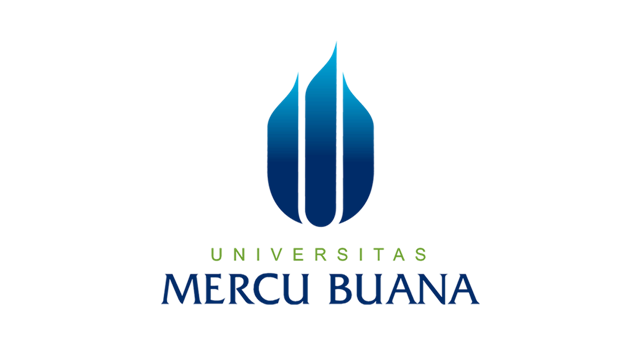Effect of Pouring Temperature Variation on Cooling Rate, Hardness and Microstructure of Al-Zn in Aircraft Structures
Abstract
Al-Zn alloys are widely utilized in industries such as automotive, aircraft manufacturing, and advanced military equipment due to their exceptional strength-to-weight ratio. Among various fabrication methods, metal casting is a commonly used technique for producing structural components from these alloys. However, a significant challenge with metal casting is the reduction in mechanical properties compared to the base material before melting. This reduction highlights the need for research to identify the optimal casting conditions, particularly the casting temperature, which plays a crucial role in maintaining and potentially enhancing the material's mechanical properties. Aluminum alloy 7075, known for its high strength, was selected for investigation. According to the Al-Zn phase diagram, the melting point of aluminum alloy 7075, based on the weight percentage specified by the Standard Aluminum Association, is approximately 660°C. Experiments were conducted by varying the pouring temperature during casting in 30°C increments above this melting point. Specifically, the alloy was melted and cast at three different temperatures: 690°C, 720°C, and 750°C. The mold temperature was consistently maintained at 220°C to isolate the effects of the pouring temperature. Results indicate that increasing the casting temperature significantly affects the alloy's microstructure and mechanical properties. As the casting temperature increases, the cooling rate decreases, leading to a finer grain structure. This finer grain size directly contributes to an increase in hardness, suggesting that higher casting temperatures can enhance the mechanical properties of Al-Zn alloys. These findings emphasize the importance of precise control over casting temperatures to optimize the performance characteristics of aluminum alloy 7075 in high-strength applications.
Keywords
Full Text:
PDFReferences
Akhyar, P. T. Iswanto, R. Syaputra, and A. Farhan, “Experimental investigation on hardness, tensile strength, and microstructure of Al-3,1Cu Cast-Alloy after T6 - tempered,” Metalurgija, vol. 61, no. 3–4, pp. 616–618, 2022.
P. T. Iswanto, Akhyar, and A. Pambekti, “Heat treatment T4 and T6 effects on mechanical properties in Al-Cu alloy after remelt with different pouring temperatures,” Metalurgija, vol. 59, no. 2, pp. 171–174, 2020.
L. P. McDonnell et al., “Superposition of intra- and inter-layer excitons in twistronic MoSe2/WSe2 bilayers probed by resonant Raman scat-tering,” 2d Mater, vol. 8, no. 3, 2021, doi: 10.1088/2053-1583/abe778.
Y. Otani and S. Sasaki, “Effects of the addition of silicon to 7075 aluminum alloy on microstructure, mechanical properties, and selective laser melting processability,” Materials Science and Engineering: A, vol. 777, p. 139079, 2020, doi: 10.1016/j.msea.2020.139079.
S. Y. Zhou, Y. Su, H. Wang, J. Enz, T. Ebel, and M. Yan, “Selective laser melting additive manufacturing of 7xxx series Al-Zn-Mg-Cu alloy: Crack-ing elimination by co-incorporation of Si and TiB2,” Addit Manuf, vol. 36, 2020, doi: 10.1016/j.addma.2020.101458.
E. Georgantzia, M. Gkantou, and G. S. Kamaris, “Aluminium alloys as structural material: A review of research,” Eng Struct, vol. 227, p. 111372, 2021, doi: 10.1016/j.engstruct.2020.111372.
L. Li, R. Li, T. Yuan, C. Chen, Z. Zhang, and X. Li, “Microstructures and tensile properties of a selective laser melted Al–Zn–Mg–Cu (Al7075) alloy by Si and Zr microalloying,” Materials Science and Engineering: A, vol. 787, no. April, p. 139492, 2020, doi: 10.1016/j.msea.2020.139492.
K. He et al., “Effect of pouring temperature during a novel solid–liquid compound casting process on microstructure and mechanical proper-ties of AZ91D magnesium alloy parts with arc-sprayed aluminum coatings,” J Mater Sci, vol. 55, no. 15, pp. 6678–6695, 2020, doi: 10.1007/s10853-020-04437-5.
M. Aniolek, T. Smith, and F. Czerwinski, “Combining differential scanning calorimetry and cooling‐ heating curve thermal analysis to study the melting and solidification behavior of Al‐Ce binary alloys,” Metals (Basel), vol. 11, no. 2, pp. 1–17, 2021, doi: 10.3390/met11020372.
J. Li, J. Feng, Y. Li, F. Dong, and G. Geng, “Cooling curve thermal analysis, phase constitution, and solidification characteristics of cast Mg–5Gd–2Y–xNd–Zr alloys,” J Therm Anal Calorim, vol. 142, no. 4, pp. 1429–1435, 2020, doi: 10.1007/s10973-020-09515-z.
S. Pang et al., “Effect of cooling rate on the microstructure and mechanical properties of sand-casting Mg-10Gd-3Y-0.5Zr magnesium alloy,” Materials Science and Engineering: A, vol. 562, pp. 152–160, 2013, doi: 10.1016/j.msea.2012.11.016.
O. El Sebaie, A. M. Samuel, F. H. Samuel, and H. W. Doty, “The effects of mischmetal, cooling rate and heat treatment on the eutectic Si parti-cle characteristics of A319.1, A356.2 and A413.1 Al-Si casting alloys,” Materials Science and Engineering: A, vol. 480, no. 1–2, pp. 342–355, 2008, doi: 10.1016/j.msea.2007.07.039.
A. V. Anil, V. Vijayan, B. Sachin, P. K. Rai, and M. Rao, “Computer aided cooling curve analysis (CACCA) of ADC-12 alloy,” Mater Today Proc, vol. 46, pp. 2591–2595, 2021, doi: 10.1016/j.matpr.2021.02.129.
N. H. Husain, A. H. Ahmad, and M. M. Rashidi, “Thermal analysis of 6061 wrought aluminium alloy using cooling curve analysis-computer aid-ed (CCA-CA) method,” IOP Conf Ser Mater Sci Eng, vol. 788, no. 1, 2020, doi: 10.1088/1757-899X/788/1/012018.
H. Akhyar and Husaini, “Study on cooling curve behavior during solidification and investigation of impact strength and hardness of recycled Al-Zn aluminum alloy,” International Journal of Metalcasting, vol. 10, no. 4, pp. 452–456, 2016, doi: 10.1007/s40962-016-0024-8.
DOI: http://dx.doi.org/10.22441/ijimeam.v6i1.23945
Refbacks
- There are currently no refbacks.
Copyright (c) 2024 Arif Pambekti, Agung Prakoso, Okto Dinaryanto, Andinusa Rahmandhika, Rizqi Ilmal Yaqin

This work is licensed under a Creative Commons Attribution-ShareAlike 4.0 International License.
INDEXED IN
International Journal of Innovation in Mechanical Engineering and Advanced Materials (IJIMEAM)
Published by:

Universitas Mercu Buana
Program Studi S2 Teknik Mesin
Jl. Meruya Selatan No. 1, Kembangan, Jakarta 11650, Indonesia
Phone/Fax. (+6221) 5871335
Email [email protected]
Homepage mercubuana.ac.id/magister-teknik-mesin

This work is licensed under a Creative Commons Attribution-ShareAlike 4.0 International License.




















